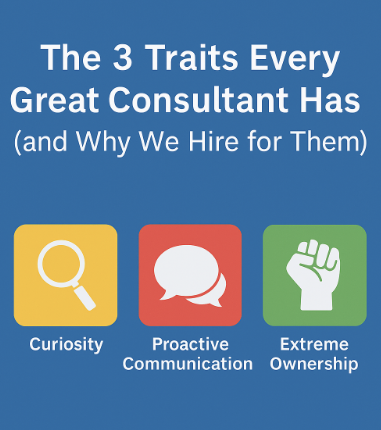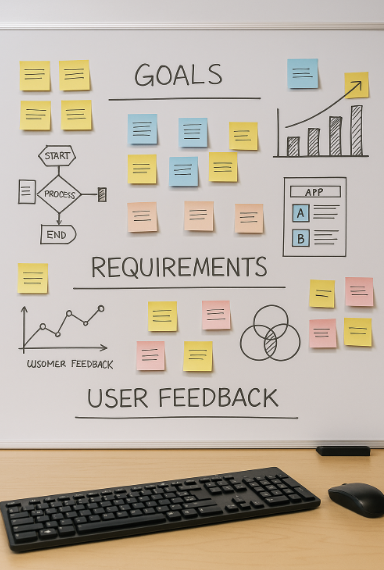The 3 Traits Every Great Consultant Has (and Why We Hire for Them)

At Intertech, we’re in the business of people—specifically, people who make technology work better for our clients. But not just any people. We hire consultants who bring more than technical skills to the table. We look for professionals who reflect the very values we’ve built our business on.
Because when a client partners with Intertech, they’re not hiring a résumé. They’re hiring a mindset.
1. Curiosity with Purpose
The best consultants ask great questions. They’re constantly learning—not just about technology, but about our clients’ businesses, challenges, and goals.
At Intertech, we value curiosity with intent. Our consultants aren’t just interested in the newest framework; they want to know how it can improve outcomes, reduce costs, or speed delivery. That’s why our team members dive into domain knowledge, attend AI training, and engage in regular internal huddles that keep them sharp and aligned with what matters most: creating real impact.
2. Proactive Communication
Software projects don’t stumble because of code—they stumble because of silence. That’s why every Intertech consultant is expected to over-communicate.
Whether it’s raising a risk early, aligning on changing business needs, or offering solutions before they’re asked for, our people keep things moving forward. We reinforce this through daily huddles, client check-ins, and quarterly in-person meetings—practices that build trust and momentum.
3. Extreme Ownership
The moment you join Intertech, you’re not just part of a team—you’re accountable to the outcome. Our consultants are trained to think like owners. That means no handoffs, no passing the buck, and no excuses.
If something breaks, they fix it. If a client needs more clarity, they provide it. And if a deadline’s in jeopardy, they flag it early with a plan—not just a problem.
Why This Matters to Clients
Clients notice. They’ll tell us things like:
“Your consultants feel like an extension of our team—not outsiders.”
“I didn’t have to ask for a fix. They already solved it.”
“I’ve worked with other firms, and the communication isn’t even close.”
These aren’t one-offs. They’re the byproduct of intentional hiring, culture, and development.
If you’re a leader who values not just talent—but talent with character—our consultants are ready.
We don’t just build software. We build trust.



